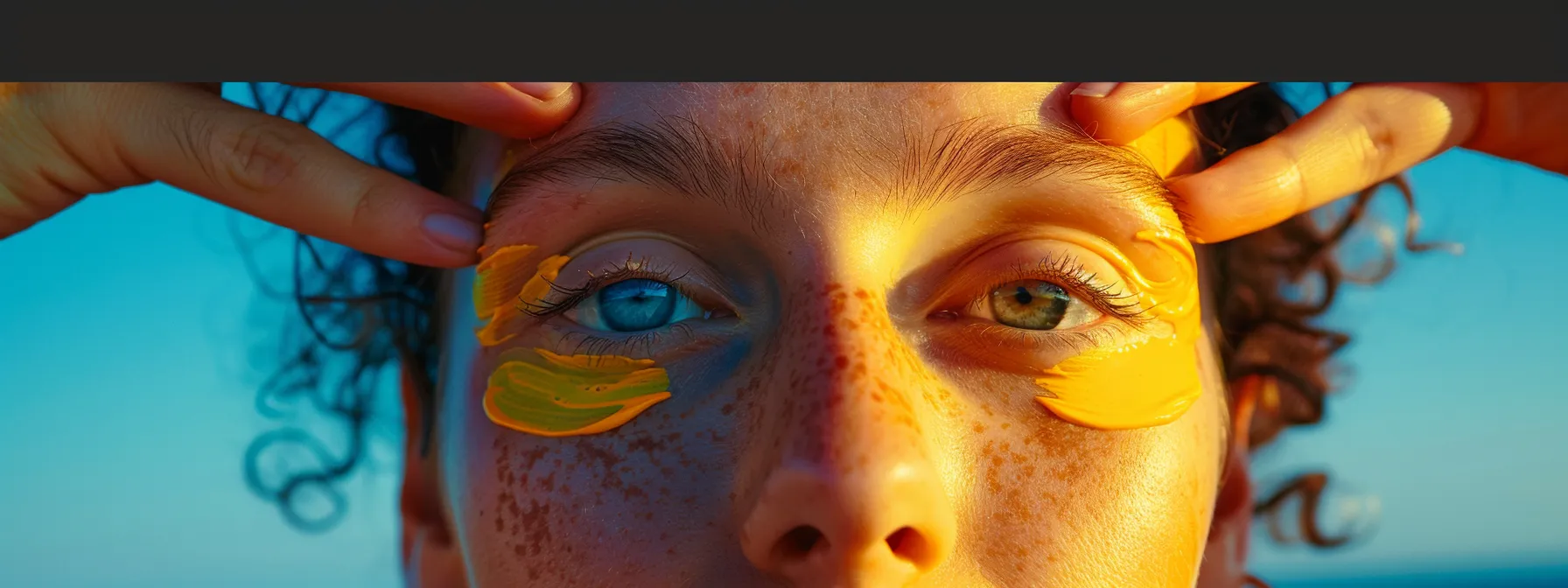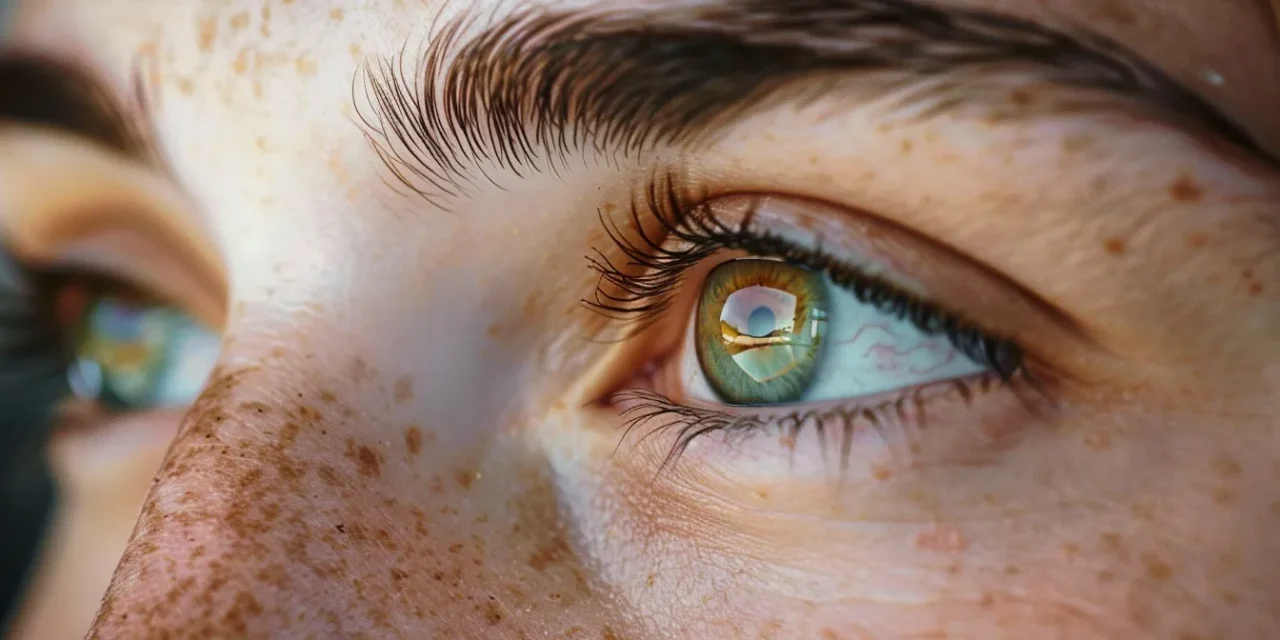Dry Skin Under Eyes: Causes, Prevention, and Treatment
Delicate and prone to dryness, the skin under our eyes challenges even the most dedicated skincare routines. Often, a deficit in oil production due to underactive glands, or an unexpected reaction to an environmental allergen, can trigger dryness in this sensitive area. In the realm of ophthalmology, experts regard inflammation as a key suspect in the development of dry, irritated under-eye skin. Adopting a tailored approach, understanding the root causes, and exploring effective treatments become pivotal in maintaining the health and resilience of the skin beneath our eyes. In this article, we delve into the intricacies of preventing and managing dry skin under the eyes, ensuring you’re equipped with knowledge for optimal skin wellness.
Understanding the Causes of Dry Skin Under Eyes

Dealing with dry skin under the eyes can be a perplexing issue, often exacerbated by a variety of factors that may not immediately come to mind. From the harsh impact of environmental triggers to the complexities of underlying skin conditions, pinpointing the cause is the first step in formulating an effective treatment plan. Certain climates strip away moisture, leading to a rash of issues impacting skin elasticity, while autoimmune diseases quietly compromise the skin’s health. Furthermore, the cumulative effect of lifestyle habits should not be underestimated, as they too can play a pivotal role. It’s also worth considering how specific medical interventions, such as refractive surgery, might inadvertently contribute to dryness in this delicate area. As we proceed, I will shed light on the intricate network of causes behind dry skin under the eyes and guide you through targeted prevention and treatment strategies.
Environmental Factors That Contribute to Dryness
The condition of our skin is often a direct reflection of the environment it’s exposed to. Harsh climates, particularly those that are windy or have low humidity, can rob the skin of its natural moisture, leading to a rough texture and the potential onset of wrinkles. Additionally, environmental allergens may precipitate contact dermatitis, a skin condition that manifests around the sensitive eye area, further compounding the dryness issue.
- Climate‘s impact on moisture and skin elasticity.
- The role of allergens in triggering contact dermatitis.
- How environmental conditions accelerate wrinkle formation.
Underlying Skin Conditions Leading to Dryness
Investigating further into skin conditions, it’s evident that eczema or atopic dermatitis often plays a villainous role in causing dry skin beneath the eyes. Those affected by such conditions might find the sensitive skin around their eyes particularly prone to redness and flaking, a situation where gentle, nourishing treatments like applying olive oil can be quite beneficial. Moreover, this same oleic goodness, brimming with antioxidants, can help fortify the skin‘s moisture barrier against irritants and pollutants. Ensuring one’s nutrition includes ample hydration, by drinking plenty of water, is also fundamental in maintaining skin health and preventing the drying effects of these conditions.
- Impact of eczematic conditions on under-eye skin.
- Benefits of applying olive oil as an antioxidant-rich moisturizer.
- The critical role of proper nutrition and hydration in skin health.
Lifestyle Habits Affectjbvg Dryness Under Eyes
Adopting the right lifestyle habits is crucial when combating the vexing issue of dry skin beneath the eyes. For instance, the quality of your pillow may seem trivial but can affect skin hydration; silk or satin pillowcases can help reduce moisture evaporation overnight. Additionally, if allergies are a contributing factor, over-the-counter antihistamines recommended by a health care provider can alleviate symptoms, but with the caveat that some may exacerbate dryness. Applying a hydrating cream formulated for the sensitive under-eye area before bed can lock in moisture, thwarting the pesky dryness that plagues many.
| Lifestyle Habit | Impact on Under Eye Skin | Recommended Action |
|---|---|---|
| Pillowcase Material | Reduces evaporation of skin moisture | Switch to silk or satin |
| Use of Antihistamines | Can relieve allergy symptoms but may dry out skin | Consult a health care provider for suitable options |
| Application of Cream | Locks in moisture to combat dryness | Apply a hydrating cream before bedtime |
Identifying Symptoms of Dry Skin Around the Eyes

As someone dedicated to maintaining a healthy lifestyle, I’ve learned to keep an eye on the subtle signs that my body sends me—including those indicating dry skin under my eyes. Itching, redness, and a noticeable scaling texture can all signal a lack of moisture, akin to a parched landscape thirsting for rain. Dry skin in this area might present as thin and papery, sensitive to the slightest contact; imagine the delicate surface of a glass that hasn’t been conditioned to withstand the everyday dust of our lives. For those of us who’ve undergone eye surgery or use products rich in vitamin A, we’re acutely aware of how such factors can amplify the risk of dry skin. And while indulging in chocolate may seem unrelated, our diet often plays an unexpected role in skin health. It is critical to differentiate between benign dryness and the warning flags of more serious skin conditions, as overlooking these cues could lead to further complications.
Common Signs of Dryness to Watch For
In my experience, vigilance in observing your skin is key, especially when it concerns the area beneath the eyes. An appointment with optometry may reveal that a disrupted tear film is contributing to dryness, suggesting a link to eye health and hydration. Additionally, an immune system that’s out of balance can manifest through skin, causing loss of ceramide, which leads to increased dryness and sensitivity. Notably, persistent dry, flaky areas might require the intervention of a gentle corticosteroid cream, under medical advice, to restore and hydrate the fragile skin under the eyes.
When Symptoms Indicate More Serious Conditions
At times, the condition of our skin transcends basic dryness and signals a more pressing concern. Persistent dry patches that resist regular moisturizing efforts, coupled with pain or an increase in sensitivity especially after a hot shower, may indicate an imbalance in skin‘s acidity, pointing towards a dermatological concern that requires professional attention. When such symptoms persist, it becomes imperative to address the barrier function of skin to retain moisture and protect against the harshness of heat.
Effective Prevention Techniques for Dry Skin Under Eyes

Combatting dry skin under eyes demands a proactive stance, intertwining daily skincare practices with an awareness of the body’s internal and external needs. Initiate this pursuit with a tailored daily skincare regimen, integrating products enriched with vitamin C to fortify and refresh tired skin. Acknowledging the body’s intrinsic need for fluid, we recognize that tear production keeps eyes lubricated; when compromised, eyes—alongside their surrounding skin—become prone to dryness. Hence, incorporating hydration-focused therapy into our routines is not to be overlooked. Equally, the food we consume nourishes us from within, impacting our skin‘s resilience to dry conditions. Shielding the delicate eye area from the ravage of environmental aggressors also plays a crucial role, essential in any strategy aimed at maintaining the integrity of the skin and preventing the discomfort of dryness.
Daily Skincare Routines to Prevent Dryness
Integrating a meticulous skincare routine is foundational to shielding your eyes from irritants like a relentless wind that can exacerbate dryness. A proactive approach might include using products that contain hyaluronic acid, acclaimed for its exceptional hydrating properties. It’s also a good practice to apply a thin layer of petroleum jelly under the eyes at night, which creates a protective barrier against moisture loss.
- Adopt a gentle cleanser suitable for dry, sensitive skin.
- Incorporate serums or creams rich in hyaluronic acid to maintain hydration levels.
- Apply a light shielding layer of petroleum jelly to minimize overnight water loss.
- Focus on a diet rich in vegetable and other nutrients to support skin health from within.
- Stay vigilant if you have a history of cataract surgery, ensuring your eye care regimen supports adequate hydration.
The Role of Hydration and Diet in Skin Health
Maintaining a robust daily intake of water is paramount for skin health, as it supports the skin‘s elasticity and can mitigate the irritation caused by dryness under the eyes. Equally influential is a balanced diet rich in vitamins, like the antioxidants found in colorful fruit, an often-overlooked hero in the skin‘s defense against dryness. While external remedies such as perfume-free moisturizers or a little petroleum jelly offer immediate relief, the long-term benefits of hydration and a nutrient-rich diet should not be underestimated in preserving the health of this sensitive area.
Protecting the Eye Area From Environmental Damage
Guarding the thin, delicate skin under our eyes from environmental harm is essential. Daily use of a moisturizer containing green tea can offer antioxidant protection, fortifying the skin‘s natural defenses. For those particularly susceptible to skin conditions like atopic dermatitis, this step is invaluable, as green tea possesses anti-inflammatory properties that help soothe irritation and prevent damage. Integrating aloe vera into my skincare regimen has been a breakthrough; its natural soothing qualities protect against inflammation and are especially beneficial for individuals managing conditions such as diabetes, which can make skin more prone to complications like dermatitis.
- Use antioxidants like green tea for its protective and anti-inflammatory benefits.
- Incorporate soothing agents such as aloe vera to calm inflammation and protect sensitive skin.
- Pay extra attention to moisturizing if you have conditions like diabetes that increase sensitivity to environmental damage.
- Take preventative measures against specific skin issues like atopic dermatitis by strengthening the skin‘s barrier.
Home Remedies and Over-the-Counter Solutions

Moving forward in our comprehensive look at dry skin under the eyes, it’s vital to consider the spectrum of home remedies and readily available treatments that can offer respite. Considering the delicate nature of the skin in this region, a gentle approach is paramount. Natural remedies often deliver soothing effects without the potential complications that might accompany plastic surgery or other invasive procedures. Moreover, for those living with persistent conditions like dry eye syndrome, leveraging a suitable cleanser that complements the skin‘s natural balance can make a significant difference. The daily rigors and stress we encounter necessitate a regimen that includes effective moisturizers and specifically formulated eye creams. These products often contain humectants, a type of ingredient that retains moisture, essential for mitigating the discomfort associated with dry under-eye skin. Informed choices in this space are critical to maintaining the skin‘s heath without aggravating delicate conditions.
Gentle, Natural Remedies for Soothing Dry Skin
Exploring the realm of natural remedies often yields surprising allies in the battle against dry skin under the eyes. My research has led me to appreciate the soothing properties of vitamin E, which, when applied topically, can replenish the vital fat that skin needs to remain supple. Especially beneficial for individuals dealing with blepharitis, a condition affecting the eyelids, vitamin E‘s antioxidant qualities also offer protection for the eyes’ lens and surrounding skin.
- Research uncovers vitamin E as a powerful hydrator for dry skin around the eyes.
- The rich fat content in natural oils infused with vitamin allays skin‘s thirst for moisture.
- Blepharitis sufferers may find vitamin E particularly soothing for inflamed eyelids.
Recommended Moisturizers and Eye Creams
In my routine as a skin care advocate, I’ve found that moisturizers and eye creams bearing tea extracts, notably green and white tea, provide a robust shield against skin stressors such as pollution and UV rays. These creams are formulated to deeply hydrate without the use of harsh ingredients like alcohol, which can exacerbate dryness. I always encourage clients to choose creams with these beneficial tea compounds while also emphasizing the need to drink ample water, as internal hydration is just as vital as external application in maintaining under-eye skin health.
When Professional Treatment Is Necessary

Managing dry skin under your eyes can be a self-care routine for minor issues, but certain persistent symptoms are a call to action for professional intervention. Observing changes related to ageing, such as increased skin laxity or reduced collagen production, should prompt a consultation with a dermatologist. If you experience ongoing discomfort, noticeable alterations in your complexion, or persistent dry patches not alleviated by over-the-counter solutions, these could be signals that it’s time to seek medical expertise. Professional skin treatments might also be necessary if previous interventions, including surgery, have complicated the delicate balance of your skin, or if conditions relating to scalp and hair health have implications for the skin surrounding your eyes. Anticipating what to expect from these treatments can prepare you for the next steps towards restoring a hydrated, resilient under-eye area.
Signs You Should See a Dermatologist
Recognizing when dryness under the eyes may be indicative of an underlying eye disease rather than a simple case of skin dehydration is vital. If persistent dryness accompanies sensitivity to changes in humidity, or if redness and scaling resist the soothing influence of home remedies like a warm compress, seeking the expertise of a dermatologist is advised. Moreover, reactions to skincare products, particularly those containing parabens, or concerns such as irritation along the eyelash line, should also prompt a professional consultation.
- Presence of persistent dry skin and sensitivity to humidity changes.
- Lack of response to home treatments, including the use of a warm compress.
- Reactions to certain skincare products, especially those with parabens.
- Irritation or abnormalities along the eyelash line.
What to Expect From Professional Skin Treatments
When stepping into a dermatologist’s office for battling dry skin under the eyes, anticipate a comprehensive assessment that goes beyond surface-level symptoms. It’s common for professionals to explore a broader range of influences affecting skin health, such as the drying effects of air conditioning, the aggravation caused by smoke, or potential irritants like retinol. If your dryness extends beyond the eyes and includes areas like the scalp, the skin expert might consider eyelid dermatitis, potentially prescribing specialized treatments tailored to this condition.
- A thorough evaluation of environmental and lifestyle factors, including exposure to smoke and air conditioning.
- Examination of related areas such as the scalp for a holistic understanding of skin health.
- Discussion about potential irritants in your current routine, like retinol, that could exacerbate dryness.
Maintaining Healthy Skin Under Your Eyes

Maintaining the delicate skin under our eyes is a journey that requires a careful blend of consistent long-term care and agility in responding to our skin‘s evolving needs. Venturing into the realms of dermatology has taught me that preventing issues like the occasional pimple or the onset of dryness hinges on the pillars of robust skin care strategies, be it through the daily application of sunscreen to guard against UV exposure or the strategic use of vitamins in both diet and skincare products to bolster the skin‘s health. Equally critical is the aptitude for vigilance—monitoring the skin for changes that merit a closer look or a possible overhaul of our current regimen. I understand that what works to protect the skin today, including the sensitive cornea-adjacent areas, might require adjustment tomorrow. It’s a dynamic process, adapting to shifting internal conditions as well as external environmental stressors.
Long-Term Skin Care Strategies
In the pursuit of healthy skin around the eyes, long-term strategies revolve around maintaining a balanced skincare regimen and being mindful of daily habits. Reducing caffeine intake, which can dehydrate skin, and using the correct brand of hypoallergenic products to avoid irritation are crucial steps. For those who wear contact lenses, it’s vital to follow hygiene protocols rigorously to prevent the risk of infection, and to be vigilant for signs and symptoms of skin distress, allowing for swift action to remedy any issues:
| Strategy Component | Action | Reason |
|---|---|---|
| Caffeine Reduction | Limit intake of caffeine-rich beverages | Prevents dehydration of the skin |
| Product Choice | Select hypoallergenic skincare | Avoids irritation and allergic reactions |
| Contact Lens Hygiene | Adhere to cleaning protocols | Minimizes the risk of eye and skin infection |
| Monitoring Health | Regularly observe for any changes in skin condition | Allows for early detection and treatment of skin issues |
Monitoring Changes and When to Re-Evaluate Treatment
Staying attuned to the nuances of my skin has taught me the importance of recognizing when a typical routine needs rethinking—be it due to an allergy that suddenly worsens or the realization that certain habits, like erratic sleep patterns, contribute to dehydration and subsequent dryness. When my usual application of shea butter doesn’t provide its usual relief, or when the cooling effect of cucumber no longer seems to soothe as it once did, it’s a clear signal to revisit my skincare strategy with fresh eyes and possibly seek medical advice.
Conclusion
Dry skin under the eyes arises from a complex interplay of environmental, lifestyle, and health factors, requiring an attentive approach to discern and address underlying causes. Prevention and treatment must integrate diligent skin care routines, including hydration and the use of nutrient-rich products, coupled with lifestyle modifications that support skin health. When persistent dryness and associated symptoms resist home care, professional evaluation becomes essential to prevent exacerbation of the condition. Overall, maintaining the delicate skin under the eyes calls for a holistic and adaptive skincare strategy, highlighting the importance of balancing daily maintenance with professional oversight.





